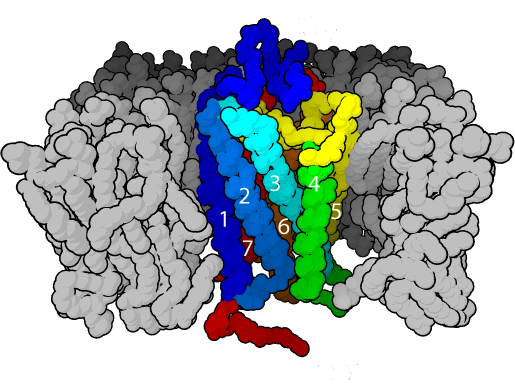
Concepts of natural selection apply to the primary building blocks of life, proteins, in the same manner as to organisms. In fact, the molecular level conservation of proteins across evolutionary time is what leads to conservation of function in the organism. One of the highly conserved proteins is the so-called G protein-coupled receptor shown in the picture. G protein-coupled receptors (GPCRs) are actually a huge protein family (i.e., superfamily) of transmembrane receptors that sense molecules outside Eukaryotic Cells in species ranging from yeast to humans, and activate very basic biological pathways and cellular responses inside the cells. Among the molecules that bind to and activate these proteins are compounds sensitive to light, odors, pheromones, hormones, and neurotransmitters. Because of the many members of the superfamily having diverse functions very basic to life, involving many physiological processes, many drugs are designed to interact with a member of this ancient and critical protein superfamily. Molecular phylogenetic studies of protein homology (i.e., amino acid sequence similarity comparisons with assumptions of mutation rate) date one primordial form within the family to 600 to 700 million years ago, a time period often conjectured to correspond to the divergence of invertebrate and vertebrate ancestors. The same method estimates that various mammalian G protein-coupled receptors diverged some 90 million years ago, well before the demise of the dinosaurs. |